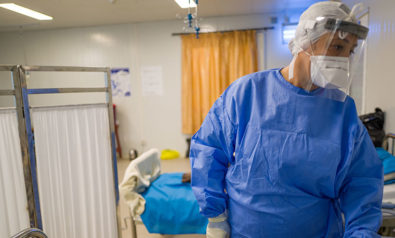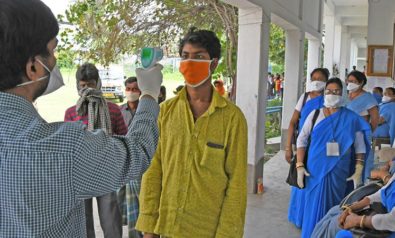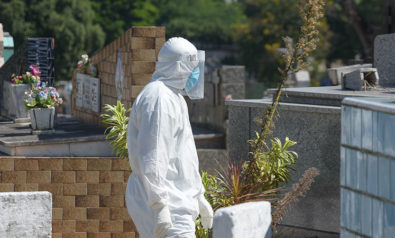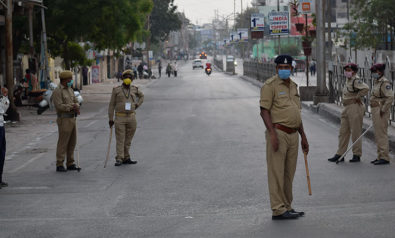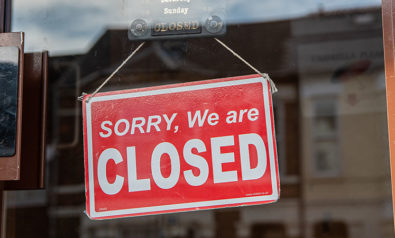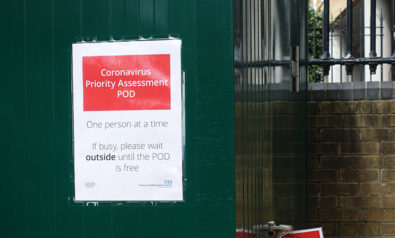Given the shortage of testing kits for COVID-19 around the world, the current testing regimen includes primarily (if not exclusively) symptomatic patients, making the rate of death appear to be worse than it might actually be. According to the US Centers for Disease Control, asymptomatic persons are not routinely tested, so the prevalence of asymptomatic infection and detection of pre-symptomatic infection is not well understood. Similarly, a high percentage of patients who are either elderly or have underlying medical conditions that make them more susceptible to succumbing to the virus may test positive and die, skewing the rate of death among younger, otherwise healthy individuals. Death rates among persons over 80 years of age have been as high as 20%.
As a point of comparison, during the 2009 swine flu outbreak, initial death rate estimates were thought to be as much as 10 times higher than ordinary flu outbreaks (with a typical death rate of 0.2%), but after the passage of time, it was determined that death rates were actually no higher than ordinary flu. Much attention was paid in the media to the high infection rate among passengers of the Diamond Princess cruise ship in Japan earlier this year, but even in that case, the death rate among passengers turned out to be about 1%, with seven deaths among 700 positive (mostly elderly) individuals.
In Italy, COVID-19 has taken a particularly high toll from a percentage perspective, but doctors from the Istituto Superiore di Sanità in Rome noted in the Journal of the American Medical Association last week that a combination of Italy’s relatively elderly population — 23% are 65 or older — and the lethality of the coronavirus in that age group partly explains its high death rate, which stood at 7.2% as of March 17.
When stratified by age group, death rates of people under 70 in Italy and China look similar, but rates are higher in Italy among individuals aged 70 or older, and in particular among those aged 80 or older. Italy’s death rate as of March 31 has been about 11%, with many deaths hastily labeled as related to COVID-19 when in fact they may not have been.
That said, there is a very real risk that COVID-19 may turn out to be deadlier in its second or subsequent wave(s) of infection than has been the case as a result of its initial outbreak. This occurred in the case of the 1918 Spanish flu pandemic, during which a third of the world’s population was believed to have been infected, resulting in more than 50 million deaths. The mortality rate for the initial outbreak is believed to have been similar to that of ordinary flu (0.1%), while its second wave has been estimated to carry a death rate of approximately 2.5%. Mortality was high in those aged under 5, 20 to 40, and over 65s. Its high mortality in healthy people, including those in the 20 to 40 age group, was a unique feature of that pandemic. Let us hope history does not repeat itself.
We should resist jumping to conclusions about what the real rates of infection and death are, have been or will be as a result of COVID-19. It is simply too early to say. We have too few tests to do a proper job in many countries and globally, and the tests that are being conducted automatically imply being heavily skewed in the direction of symptomatic individuals. Governments around the world will continue to grapple with the best course of action to try to prevent more infections, but they, and the global medical community, should be similarly focused on getting the testing regimen and interpretation of the results of those tests right.
The views expressed in this article are the author’s own and do not necessarily reflect Fair Observer’s editorial policy.
Support Fair Observer
We rely on your support for our independence, diversity and quality.
For more than 10 years, Fair Observer has been free, fair and independent. No billionaire owns us, no advertisers control us. We are a reader-supported nonprofit. Unlike many other publications, we keep our content free for readers regardless of where they live or whether they can afford to pay. We have no paywalls and no ads.
In the post-truth era of fake news, echo chambers and filter bubbles, we publish a plurality of perspectives from around the world. Anyone can publish with us, but everyone goes through a rigorous editorial process. So, you get fact-checked, well-reasoned content instead of noise.
We publish 2,500+ voices from 90+ countries. We also conduct education and training programs
on subjects ranging from digital media and journalism to writing and critical thinking. This
doesn’t come cheap. Servers, editors, trainers and web developers cost
money.
Please consider supporting us on a regular basis as a recurring donor or a
sustaining member.
Will you support FO’s journalism?
We rely on your support for our independence, diversity and quality.



